Apply now to join our next cohort of Community Science Fellows and Community Leads!

Satellite image of Rosemont, SC. Image credit: Google Earth, earth.google.com/web/
Residents of Rosemont South Carolina, with the support of the Lowcountry Alliance for Model Communities (LAMC) and Charleston Community Research to Action Board (CCRAB) will utilize municipal, state and federal hydrology and infrastructure maps to better understand flood risk in their community, specifically mapping the potential impacts of a seawall surrounding the Charleston peninsula. Community members will also conduct water quality analyses to understand how legacy pollutants from industrial runoff are collecting in floodwater. LAMC, CCRAB and Rosemont residents will then utilize this understanding of flood risk to consult technical expertise to evaluate nature-based solutions applicable for Rosemont and communicate these solutions to municipal, state and federal agencies.
Rosemont is a municipality in North Charleston, South Carolina, bordering salt marshes, the Ashley River, and I-26. This community faces acute threats from legacy pollutants, poor air quality, and flood risk which is exacerbated by sea level rise. Pollutants from past phosphate mining in the Charleston neck area compound with industrial pollutants from the Virginia-Carolina Chemical company, the Pacific Guano company, Atlantic Phosphate works, Koppers Inc., Kinder Morgan and Solvay.
This community has deep familial and generational relationships with the region. Individuals express concern for displacement through gentrification compounded by sea level rise and other climate impacts. In addition to these existential threats, residents are worried about community members’ health and ability to reside in this location due to various and compounding environmental threats. This community is primarily African American and until recently, elderly before an influx of younger relatives and new community members gained properties. Residents are concerned about the future of Rosemont, considering environmental justice issues listed above that relate to air quality, legacy pollution, noise pollution and flooding.
With support from the Lowcountry Alliance for Model Communities (LAMC) and the Charleston Community Research to Action Board (CCRAB), the Rosemont community will use this project to advocate for flood risk reduction and nature-based solutions to mitigate pollution risk. This advocacy is especially important in light of the Army Corps of Engineers 3×3 seawall project (read more about this seawall proposed by the ACOE here and additional strategies provided as an alternative to the controversial seawall here), which will impact flooding in the Rosemont community.
Understanding flood risk will empower Rosemont residents to advocate for a safe and healthy home, and provide residents with a greater understanding of environmental injustice impacting local infrastructure, resident health, and personal property.
To understand flood risk, the Rosemont community will assess flood zones via hydrology mapping from Charleston, NOAA, and municipal infrastructure, to understand current and future risk. This knowledge of hydrology and local flooding will contribute to conversations with local, state, and federal agencies on the Army Corps of Engineers (ACOE) 3×3 Seawall project, which will directly impact the Rosemont community. In addition to understanding where Rosemont is flooding, the community will use this project to understand the contaminants in the floodwater. Due to Rosemont’s close proximity to former phosphate mining sites, the community experiences acute risk from industrial runoff and legacy pollutants contaminating flood water. To understand this acute risk, the Rosemont community will conduct a citizen science led project to assess water quality and determine legacy pollutant concentrations. This water quality analysis coupled with hydrological maps will inform future remediation efforts to lessen flood risk for residents and communicate threats to policy makers, the Rosemont community, and the general public. These remediation efforts will prioritize nature based solutions, such as bioremediation, to lessen flood damage, protect public and private infrastructure from flooding, and combat legacy pollutant accumulation.
Public Findings
Community and Community Partner Empowerment:
Scientific and Broader Impacts:
October-December 2021: defining project, learning about community needs and goals
January – March 2022: Search for, select, and connect with scientific partners and potential funding streams
March – May 2022: Work with scientific partners to create studies and outline project implementation
Summer 2022-Winter 2022: Conduct citizen science based water quality assessments and create flooding maps
Winter 2022 – Spring 2023: Communicate findings with partners, Rosemont community, and local, state, and federal government entities. Communicate with scientific expertise on best practices in nature based solutions to remediate legacy pollutants and mitigate flood risk in the community based on unique pollutants and flooding experienced in Rosemont.
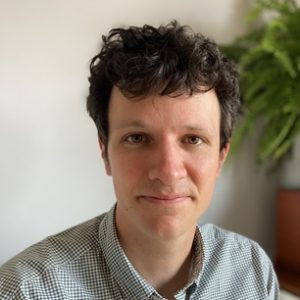
Brian Walter is a leader of the Soil and Water Team at Charleston Community Research to Action Board (CCRAB), and a PhD Candidate in Anthropology at the University of California, Santa Cruz.
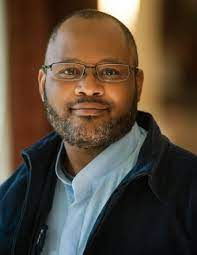
Omar Muhammed is the Executive Director for a non profit in North Charleston, SC called the Lowcountry Alliance for Model Communities (LAMC). LAMC is the only grassroots organization in the United States to use the National Environmental Policy Act (NEPA) to mitigate the impacts from two federal funded projects. We use our mitigation funds (total of 8 million dollars) to address legacy poverty concerns in low-wealth communities located in the southern end of North Charleston. Our funds support our purpose to create healthy families by creating opportunities for our residents to obtain affordable housing, close the economic and educational gaps, and address legacy environmental justice concerns.
Dr. Vijay Vulava is a professor of environmental geochemistry at the College of Charleston. He is educated in environmental engineering and sciences and has studied water and soil pollution for over 25 years. Most recently, his research group has focused on studying stormwater pollution and its impact on urban environments and public health.
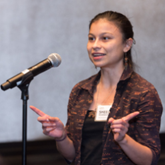
Sheelah Bearfoot is a program manager at Anthropocene Alliance. She graduated with a degree in Genetics and Plant Biology from UC Berkeley in 2016. She’s Chiricahua Apache, and worked at the Native American Health Center in SF for two years as a diabetes educator before starting a master’s in Environmental Health Science at Hopkins, where she continued her focus on Indigenous health disparities.
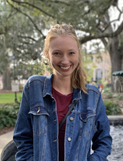
Lara Noren – is currently a NOAA National Coral Reef Management Fellow in Hawai’i. She is excited to join the Thriving Earth Exchange team to support communities as they utilize science based programs to pursue community driven goals. Lara received a BS in marine biology from the University of North Carolina Wilmington, and participated in ocean centric community outreach, science communication, and natural resource management during and after her collegiate career.

Anthropocene Alliance (A2) has more than 100 member-communities in 35 U.S. states and territories. They are impacted by flooding, toxic waste, wildfires, and drought and heat — all compounded by reckless development and climate change. The consequence is broken lives and a ravaged environment. The goal of A2 is to help communities fight back. We do that by providing them organizing support, scientific and technical guidance, and better access to foundation and government funding. Most of all, our work consists of listening to our frontline leaders. Their experience, research, and solidarity guide everything we do, and offer a path toward environmental and social justice.
The Lowcountry Alliance for Model Communities (LAMC). We are working to protect and transform the communities we serve to become self-sustaining communities that honor the living culture and our residence while creating better environments for the future.
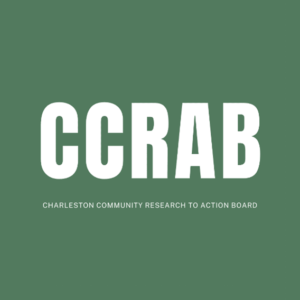
Charleston Community Research to Action Board (CCRAB). Charleston Community Research to Action Board is a group of community-based citizen-scientists conducting research in environmental justice issues in Charleston and North Charleston. CCRAB aims to support and empower communities responding to historic and contemporary injustices.
Rosemont Community Association
(c) 2024 Thriving Earth Exchange